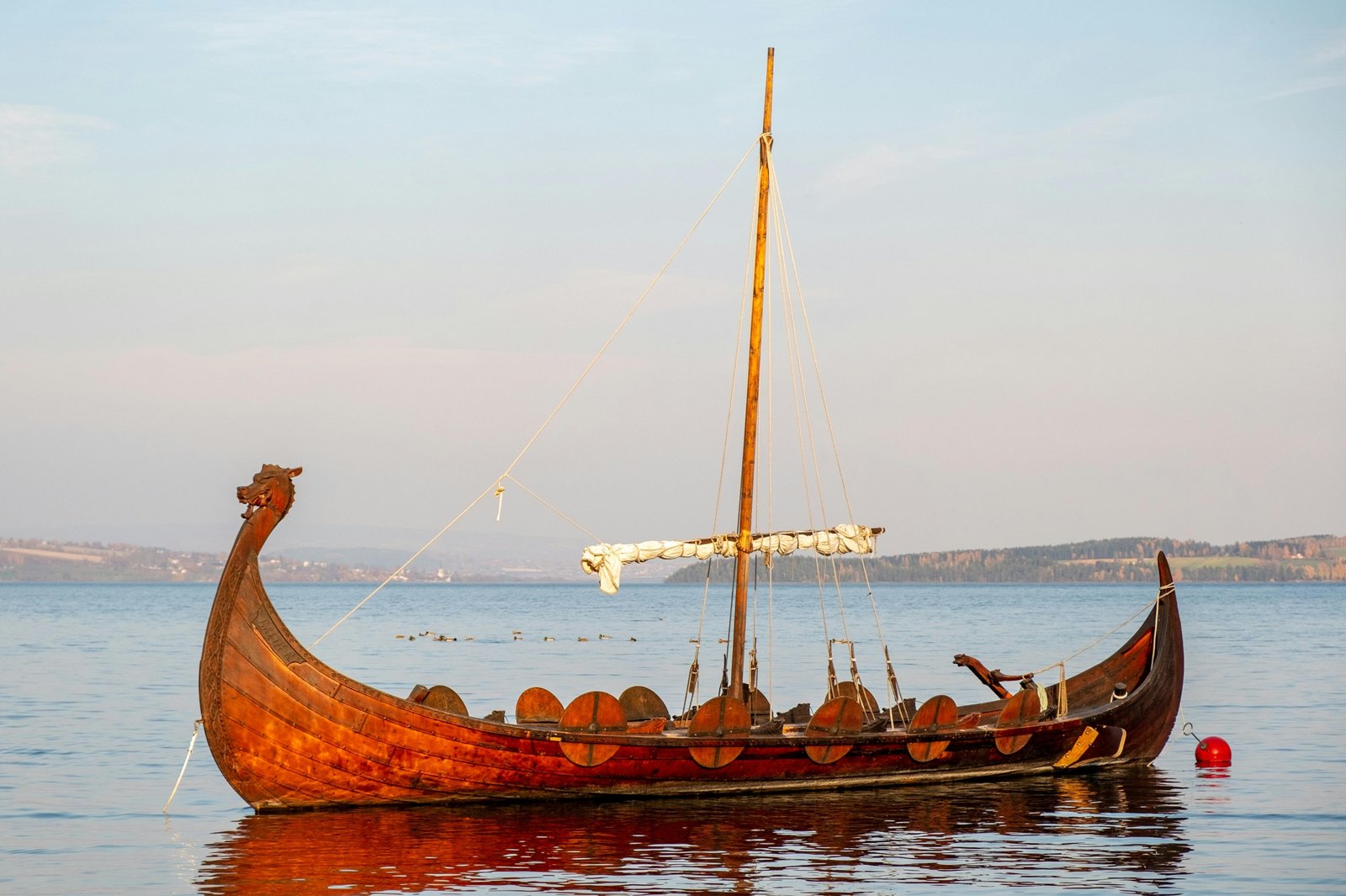How to Describe the Longships Vikings Used to Travel and Explore
When we describe the longships vikings used to travel and explore. we talk about more than just a boat. We discuss a masterpiece of naval engineering. These vessels were the key to Viking dominance for centuries. In fact, their advanced design allowed Norsemen to raid, trade, and settle across vast territories, from North America to the Middle East. Therefore, understanding the longship is essential to understanding the Viking Age.
Let’s Describe the Longships Vikings Used to Travel and Explore
The Viking longship was long, narrow, and light. Its shallow draft was a critical feature. This meant it could navigate in waters as shallow as one meter. Consequently, Vikings could sail up rivers and launch surprise attacks far inland. They built these ships using a clinker construction method. This involved overlapping oak planks, which were then fastened with iron rivets. This technique made the hull both strong and flexible, allowing it to bend with the waves rather than break.
Furthermore, the symmetrical design of the longship was ingenious. Both the bow and the stern were curved upwards and looked nearly identical. This feature allowed the ship to reverse direction quickly without needing to turn around. As a result, it provided a crucial advantage for escaping tight spots or making a swift retreat after a raid. This maneuverability was unmatched by other ships of the era.
Key Features of a Superior Viking Longship
Several distinct features defined the longship. To truly understand these vessels, we must look at their components. These elements worked together to create a formidable ship perfect for exploration and warfare.
Power of Sail and Oar
Longships had a dual propulsion system. A large, square sail made of wool or linen powered the ship over long distances in open water. However, when the wind died down or during combat, the crew would use oars. The ship’s sides were lined with oar-ports, allowing a full crew of warriors to row. This combination of sail and oar power provided both speed and incredible tactical flexibility.
The Iconic Dragon Head
Many longships featured a fearsome animal head carved into the bow, often a dragon or a snake. This was not just for decoration. Indeed, these carvings were meant to intimidate enemies and ward off evil spirits. The sight of a dragon head appearing through the mist was a powerful psychological weapon. It signaled the arrival of fierce warriors and instilled terror in coastal communities.
The Impact of Longships on Viking Society and Expansion
The longship was the engine of the Viking Age. Without it, their historical impact would have been vastly different. These vessels were not just tools of war; they were also vital for trade and colonization. Vikings used them to establish trade routes connecting Scandinavia with the Byzantine Empire and beyond. In addition, they transported settlers to new lands like Iceland, Greenland, and even North America, centuries before Columbus.
The ability to travel far and fast changed everything. Consequently, it brought immense wealth and new ideas back to Scandinavia. The longship enabled a cultural and economic exchange that reshaped Europe. In summary, these remarkable ships were a testament to Viking craftsmanship and their adventurous spirit. They were, without a doubt, the most important piece of technology the Norse possessed.



